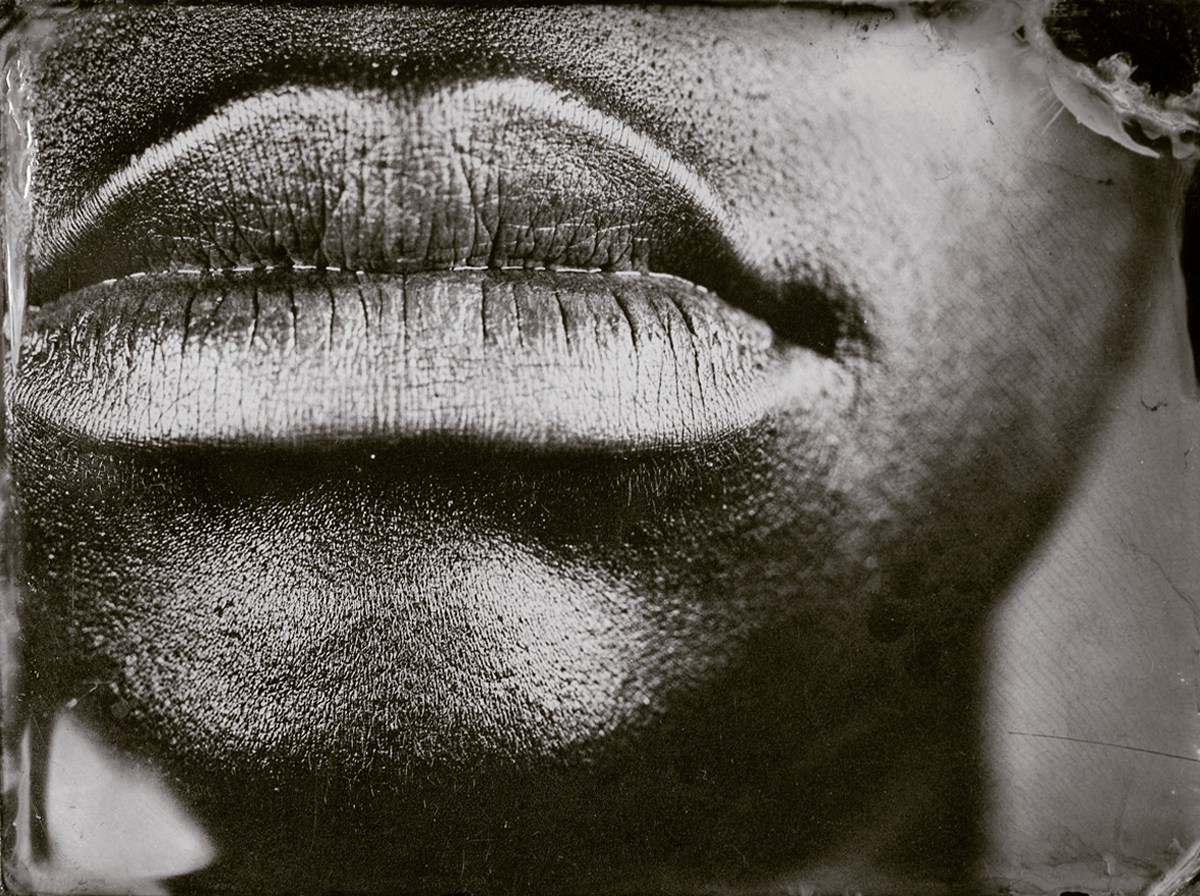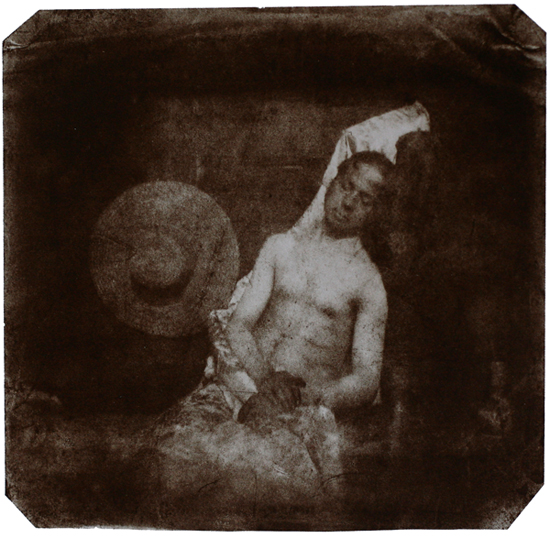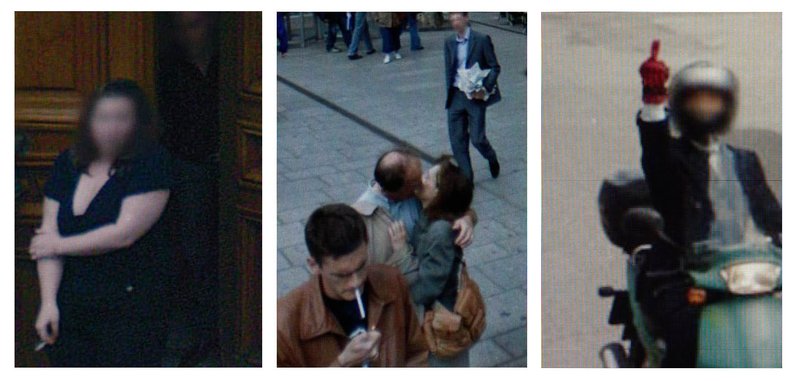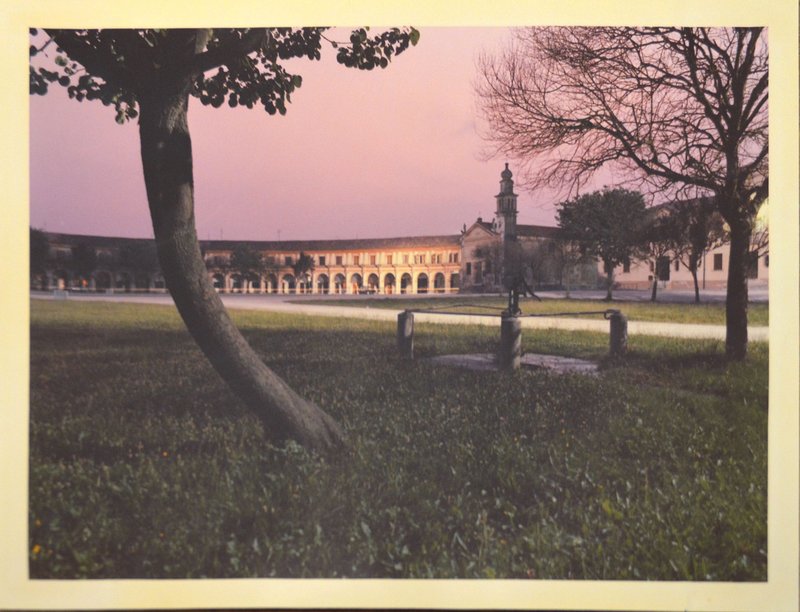COLLECTING 101
From C-Print to Silver Gelatin: The Ultimate Guide to Photo Prints

With a vast majority of today's photography being viewed online as JPEGs or similar file formats, it's easy to forget that the actual craft of printing photographs is a complex and storied one. Christopher James's The Book of Alternative Photographic Processes, a reliable tome for darkroom developers, is a 700-page cookbook of chemical recipes and it notes the history of photographic printing methods from the obscure (salted paper, whey, and argyrotypes) to the cherished (silver gelatin, cyanotypes, and wet plate collodion). Many photographers own tattered copies of the book with notes scrawled in the margins, or detailed adjustments to ratios developed by long-dead chemists in order to better suit their own processes.
Today, photographic prints can be roughly divided into two categories. The first, and the root of the medium, is chemical prints, like those detailed in James's book. There are dozens, if not hundreds, of methods for producing photographic images with chemicals, but the general concept is that you have a transparent image (like a film negative), which is placed or projected onto a paper that's treated with light-sensitive chemicals, much like the emulsion on film itself. At this point, depending on the process, the image will either begin to appear when it's exposed to light, or when "developed" with additional chemicals.
More commonly, though, photographic prints are made digitally. At their most basic level, digital processes work just like a printer you might have at home, where a digital image is transmitted to a device that spits out an image at the size you specify. But just as you might have an inkjet printer at home, and a laser printer at the office, there's more than one way to create a digital photographic print.
In both processes, monochromatic images are significantly easier to produce, requiring only a single light-sensitive receptor. Color is obtained by combining elemental hues, either through "additive" (ie., red plus green equals yellow) or "subtractive" (ie., cyan plus magenta equals blue) mixtures. Indeed, there are few better ways for photographers to learn their color theory than through color printing, where the slightest adjustments to any dye can drastically affect the image's output. Here are some of the more common methods you're likely to encounter, spanning both digital and chemical processes.
PIGMENT PRINTS
Pigment prints are made by digital inkjet printers, which mix ink to create specific hues. The ink is then applied directly to paper in fine detail, measured in DPI (dots-per-inch). If you own a printer that uses ink cartridges, that's what we're talking about here. The term giclée (pronounced ghee-clay) was coined by a French printmaker in the 1990's to refer specifically to fine art inkjet prints. It was intended as a way to avoid the negative connotations of inkjet printers, which were still in their infancy, but backfired as many artists today avoid the neologism in favor of more specific terminology. Today, inkjet or giclée prints are generally referred to by the kind of ink used.
Most consumer-level printers like the kind you'd purchase at a local store use dye-based inks, which are composed of a colorant that's fully dissolved in liquid. More valued by photographers, though, are pigment-based inks, which gain their hue from powdered substances suspended in liquid. Photographic prints made on inkjet printers that use pigment-based inks are commonly referred to as "pigment prints."
However, because pigment is sensitive to light, the color of these prints can shift or even fade over time, which is why many museums store their works in carefully regulated environments. Given regular exposure to light, a pigment print might only last a couple decades before the color degrades, although this depends on a variety of factors, including the type of paper used.
On the other hand, "archival pigment prints" contain a more stable dye, developed to address exactly this issue. As the name suggests, they're more suitable to longterm storage, and can stand up to light for over 100 years. In all cases, storing inkjet prints away from light will protect their longevity.
CHROMOGENIC (C-TYPE) PRINTS
Chromogenic printing is compelling because it spans digital and chemical processes. First developed in 1942, chromogenic color prints are basically composites of three monochromatic layers, which combine into full-color images. As with most chemical processes, chromogenic prints make use of paper treated with a chemical mixture. In this case, that emulsion contains light-sensitive silver crystals. Silver halide, as you'll learn below, is more commonly associated with black-and-white photography because it creates a monochromatic image. But with chromogenic prints, three silver halide layers are dyed specific colors—cyan, magenta, and yellow—and combine to form a full-color image.
Chromogenic printing is a reliable and relatively straightforward color process. It was a dominant method of color printing throughout much of the 20th century, which in turn made it ideal for adapting to handle digital prints. Digital C-Type printers use LEDs or lasers to project an image onto treated paper (as opposed to projecting film through an enlarger), which is then developed along the same chemical process as above, often with automated machinery.
Chromogenic prints should last about 60 years of light exposure, which is more than pigment prints but less than archival pigment prints. However, chromogenic prints were an early method for producing large scale prints—and even today, digital c-type printers are capable of producing larger images than inkjet printers, which max out around 60 inches—which lead to the format's adoption by large format photographers, such as those of the Düsseldorf School. And because those artists, like Candida Höfer, are often associated with the art market's embrace of photography as an artistic medium in the 1980's, chromogenic prints have earned a reputation as a more "serious" process than pigment printing. This reputation is undeserved, as today's high-end pigment printers are capable of delivering richer, fuller color than digital c-types.
Digital chromogenic prints can also be made on plastic materials through a process called "Duratrans," which was brought to the art world by Jeff Wall, with his backlit prints mounted on light-boxes. As with pigment prints, chromogenic prints are sensitive to light, but can be protected by special glass that reflects harmful rays. Digital chromogenic prints are sometimes called Lambda prints.
SILVER GELATIN PRINTS
If you've ever taken a darkroom course, you likely began by learning silver gelatin printing, a process that's associated with the black-and-white work of early-20th century photographers of all movements—Bauhaus, street, photojournalism, you name it. It's a simple process that makes use of safe, readily-available chemicals, and remains incredibly popular today. A tried-and-true method developed in 1871, silver gelatin (or gelatin silver) printing is an example of "latent" printing, in which an image is activated by light, but is not revealed until submerged in a developer solution. In this case, a negative image is projected onto paper treated with light-sensitive chemicals: silver halide suspended in gelatin (a viscous liquid made from animal collagen). A series of chemical baths will subsequently reveal the latent image, halt the development, remove its sensitivity to light, and fine-tune contrast.
Silver gelatin prints can be made on a wide variety of paper types, which can have great affect on the texture and luminosity of the image, and so it's not uncommon to find the paper specified along with the process. You might even find many artists have a strong loyalty to specific brands, or exhibit interest in experimenting with papers and materials.
PHOTOLITHOGRAPHY
In our guide to print-making, we wrote that a lithograph is "the result of a complex process that involves using a combination of oil, fat, water, and acid to transfer—or 'offset'—an image from a limestone sheet onto a metal plate and then eventually onto a piece of paper or other material." While the process is still too technical to really dive into here, it's enough to know that the process can be tweaked to produce photographs as well. While photolithographs are technically a chemical process, as with chromogenic printing, modern "cleanrooms" can be highly automated.
SCREENPRINT OR SILKSCREEN
Silkscreening is a printing process popularized by Pop artists like Andy Warhol that involves pressing ink through a stencil. This printmaking process can be adapted for the reproduction of photographs by essentially making a stencil out of dried photo emulsion. Because emulsion hardens where it is exposed to light (which is what, in other processes, makes areas of an image appear dark), a positive image can be applied to a sheet of dry emulsion in order to create a negative stencil. When developed, this stencil that can be used for screenprinting.
RISOGRAPH
Risographs are essentially automated screenprints, in that they duplicate images by pushing ink through a stencil. However, unlike screenprinting, risographs maintain their quality throughout many uses, because their stencils (or "master copies") are made by burning an image into a thermal plate. This makes them ideal for mass production, not unlike a Xerox printer built for photographs.
 Myra Greene, Untitled from "Character Recognition"
Myra Greene, Untitled from "Character Recognition"
HISTORICAL OR "ALTERNATIVE" PROCESSES
With the mainstreaming of digital printing, many chemical processes are collectively referred to as "historical" or "alternative" photographic processes. However, many of these might have been the dominant method at certain points in time, or in certain parts of the world. In recent years, artists have renewed interest in these hands-on processes, in part as a response to the detached air of digital printing, but also because of the way certain chemicals can be handled almost like paint. Other artists are interested in the history of a specific process. Myra Greene used ambrotypes in her series "Character Recognition" because of Joseph T. Zealy's usage of the process to depict slaves in South Carolina. There are a number of ways to differentiate between alternative processes, but it can be helpful to think of them as either "reversal" or "chrome."
Reversal processes, like silver gelatin, will invert the color of their source image. So, a photographer would place a negative image in between a light source and paper. The dark areas on the film will block the light from interacting with the treated paper, leaving those areas bright after they develop. Think of it like a sunburn—the areas where the sun don't shine remain light.
Chrome processess are a lot more complicated, and therefore less common than reversal processes. They generally involve some sort of color transfer, such as dye destruction, or another process through which a color reversal takes place within the paper itself.
 A contact print frame can be used to keep a source image and print aligned throughout printing.
A contact print frame can be used to keep a source image and print aligned throughout printing.
Here are just a few alternative processes that you might come across:
Daguerreotypes are controversially considered the first widespread photographic process. (Controversial because Hippolyte Bayard developed his own photographic process concurrently, but was pursuaded to postpone his announcement by a friend of Louis Daguerre. Bayard then faked his own death in likely the first staged photograph.) Daguerreotypes are made by exposing sheets of silver-plated copper directly to the subject, often via a camera obscura. The image is then developed directly on the plate with mercury vapor (one reason the method has fallen out of favor).
 Hippolyte Bayard, Self Portrait as a Drowned Man, 1840
Hippolyte Bayard, Self Portrait as a Drowned Man, 1840
Photogravure, like daguerreotypes, begin with a treated copper plate, which is exposed with an image. However, at this point the plate is etched, so that it can be used to press additional prints. Developed by Nicéphore Niépce in the 1820's, they're also one of the earliest methods of photographic printing.
 George C. Cox, Walt Whitman, c. 1887
George C. Cox, Walt Whitman, c. 1887
Cyanotypes, named for their blue hue, use a chemical reversal process developed in 1842. Traditionally, though certainly not uniformly, cyanotypes forgo the use of an enlarger, instead placing the source image directly against paper treated with chemicals. This is referred to as a "contact print," and is used in a number of historial processes, most commonly those known as "printing-out processes." In contrast to latent process (as in silver gelatin, above), which reveal images quickly when put in contact with a developer, printing-out processes reveal images slowly, while in contact with light. Cyanotypes take well to soft papers and even fabric, but are most readily identifiable by their vibrant color and clarity. Anna Atkins, the first woman photographer, worked primarily with cyanotypes, and the term "blueprint" comes from the adoption of cyanotypes into architectural rendering.
 Anna Atkins, Chylocladia clavellosa, c. 1843–53
Anna Atkins, Chylocladia clavellosa, c. 1843–53
Wet Plate Collodion is a historical process that has seen a resurgence in popularity thanks to its adoption by artists like Sally Mann. Historically, wet plate collodion has been associated with the landscape and documentary work of photographers like Eadweard Muybridge and Alexander Gardner, and the deployment of portable darkrooms because of its need to be developed within about fifteen minutes of exposure. As its name suggests, the process makes use of a plate (often metal or glass) that's "wet" with a light-sensitive collodion mixture (basically a syrup of alcohol and ether) that generally contains silver halide. Sometimes, the collodion is replaced with a gelatin, to much the same effect.
 Alexander Gardner's portable darkroom, c. 1867
Alexander Gardner's portable darkroom, c. 1867
Cibachrome, often known as Ilfochrome, is a chrome process that uses extraordinarily stable dyes to maintain longevity. In addition to being archival, colors in cibachrome prints have a deep saturation that people find divisive. Famed Italian photographer Luigi Ghirri made use of cibachrome in his iconic series of color photographs, Kodachrome, in one notable example.
Platinum or Palladium printing is another particularly stable process, capable of holding an image for thousands of years, although in this case the image is monochromatic. Another early 19th century development, platinotypes are popular among artists who value its fine tonal range and reflective quality.
MOUNTING
While not directly related to photographic printing, many artists like to specify the way in which they mount their work—for example, whether a photo has been glued to a stiff material for support. As such, it can be helpful to know some of the common mounting processes.
Diasec is an acrylic bonding agent that's used to mount prints to glass. Because Diasec is clear and adheres without bubbles, it is generally applied directly to the face of the image, allowing the photo to sit flush against its glazing. This not only protects the photo from air and harmful light rays, but the acrylic coating can help provide a rich saturation. Chromogenic prints are frequently face-mounted with Diasec, as the combination results in vibrant, detailed images with rich color and clarity.
Dibond is a common method for mounting prints, composed of a thin board of aluminum and polyethelyne. Another brand name, Dibond is frequently used for large prints that benefit from added structural support without the addition of significant heft.




No comments:
Post a Comment